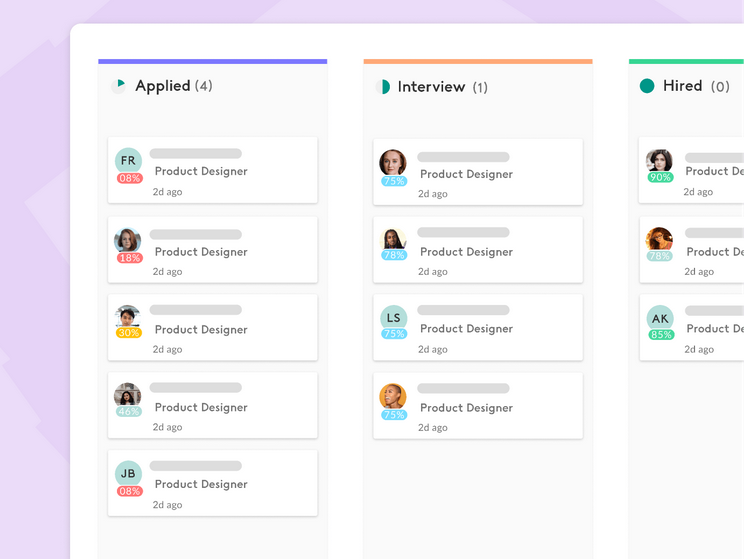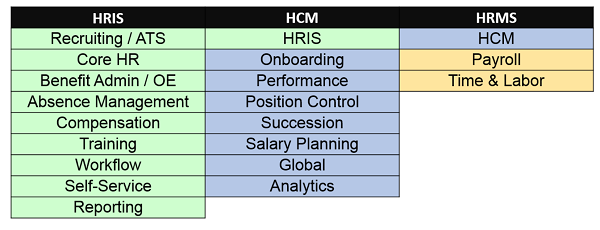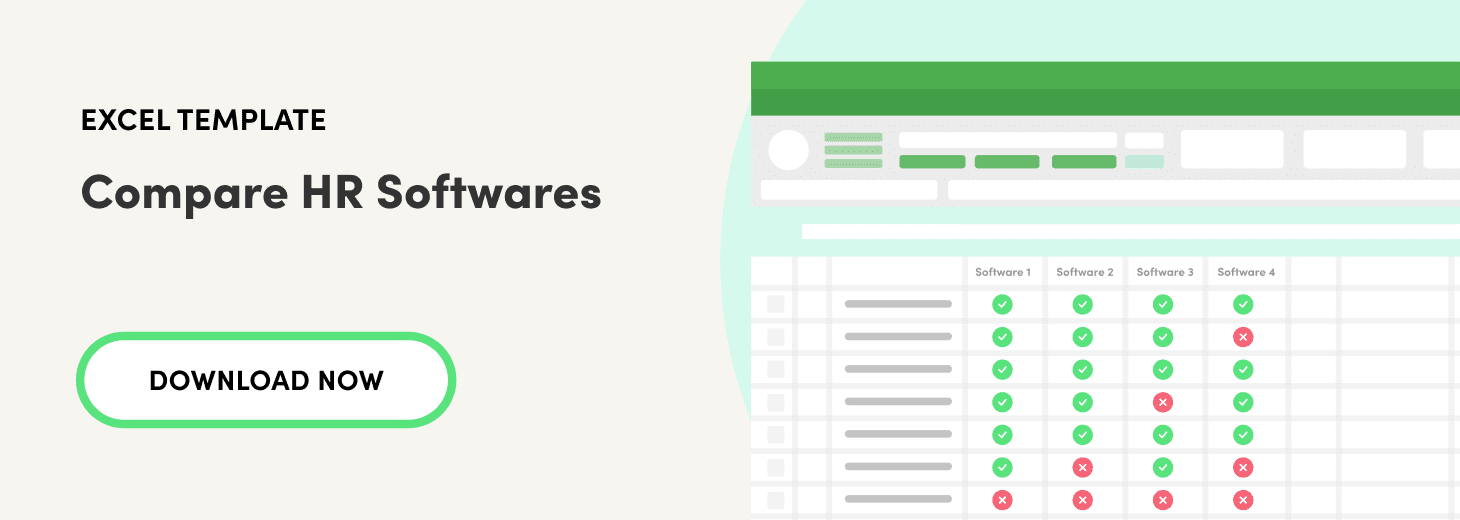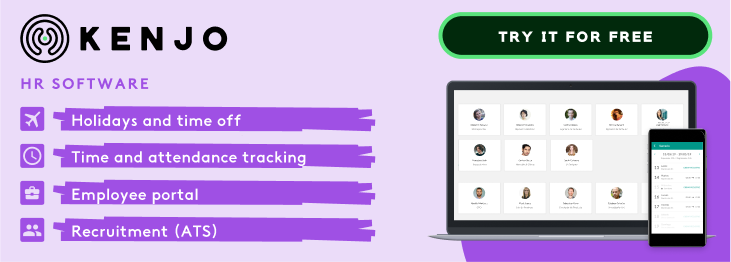What is a human capital management system?

Technology has changed everything. And even the way HR departments work. Processes that, in the past, were slow and inefficient, are now optimised and automated with the help of human resources software. These systems enable you to maximise HR’s impact within the company, from both a strategic and human perspective.
What is HCM?
HCM stands for human capital management.
Gartner defines it as a set of practices related to people resource management focused on an organisation's needs to provide specific competencies. These practices are implemented in three categories: workforce acquisition, management and optimisation.
At the same time, other definitions highlight the aim of transforming HR’s administrative functions to boost commitment, productivity and business value. And in fact, HCM thinks of the workforce as a fundamental company asset whose value can be maximised through investment and strategic management.
A human capital management system is, therefore, a software that integrates all of HR’s management functions in one single platform to meet these objectives. So, for this reason, this is a fundamental tool for companies that want to maximise their HR efficiency and speed up their employee hiring and management processes.
As we’ll see a little later, some of its features include:
- Recruitment.
- Onboarding processes.
- Reporting and analysis.
And what's more, it's a cloud-based platform you can access from anywhere, without the need to install any programmes on your computer.
What's the difference between HCM and HRMS?
This article by SelectHub explains that HRM systems are basically the same as HRMS or HRIS. Any differences in terminology emerged because these systems were developed in parallel and received different names. Even so, you should be aware of the subtle differences that exist between them.
Mike Maiorino provides a clear explanation of each one. Basically, the main difference between HCM and HRIS systems is that the first is more comprehensive than the second. As the table that Maiorino shares in his article shows, human capital management software (HCM) has all of the features a human resources information system (HRIS) has.

And finally, a human resources management system (HRMS) has more extensive capabilities than HCM systems, also including payroll and timekeeping features. So the latter would be the most comprehensive solution of the three.
The importance of a human capital management system for your company
Human capital management is important because people are the real driving force of any company. Employee happiness is directly proportional to productivity.
Consequently, human resources professionals have the responsibility to create internal policies and actions to guide, train and motivate employees. And today, we know that talent is a precious resource in any organisation and one that could define the success or failure of any project.
The current market and trends make recruitment, retention and managing employees even more difficult. So, it’s vital to be proactive and ensure we have the right tools for the job.
A human capital management system integrates, automates and optimises many of the department's internal processes. HR professionals can, therefore, save up to 40% of the time spent on administrative tasks and focus on more strategic issues that bring value to the company and its people. You can see more information in our aticle about what does HR software do.
Key benefits of HCM
Using software can bring a range of benefits to the organisation. We've already touched on some, but let's take a look at them, one by one:
Boosts productivity for the whole organisation
HR managers increase their productivity by using HCM systems. They lighten your workload by automating administrative tasks, making all information easily accessible and available for those who need it to speed up internal processes.
In fact, HCM software can boost the productivity of the whole organisation Timekeeping and project management functions, for example, will not only tell you how many hours employee are working, but also which tasks are working on, how much they are producing and at which rate you should invoice for them.
They help you fulfil your department’s obligations
Organisations all over Europe have to comply with a series of rules and regulations according to their country’s employment law. HCM software is a vital tool in helping you comply with them. It obviously isn’t going to do your job for you, but it does enable you to set up rules that will be applied automatically and consistently across the entire organisation.
Strengthens employee commitment
A growing number of experts state that employee commitment is one of the crucial factors in a company’s success. Human capital management software gives employees access to their information and creates a direct communication channel with the HR department.
Why does it strengthen commitment? Making this information available to employees reflects transparency. What’s more, if their experience with the tool is a positive one, this also improves their level of trust.
Protects company information
HCM software is safer than any traditional programs. All the information is stored in the cloud and protected by sophisticated security systems, in which suppliers invest large sums of money.
Your company data will be much safer in the cloud than an Excel file on someone's computer, which could be accidently deleted or hacked if it isn't properly protected.
Functions a human capital management system should offer
Are you thinking of buying HCM software? When it comes to choosing one, remember to analyse the functions it offers to avoid confusing them with HRIS or HRMS systems.
- Onboarding: you never get a second chance to make a first impression. HCM software guarantees a smooth and pleasant onboarding process. It helps new employees find their feet in the company much sooner. This software enables you to design the process, coordinate with the other people involved and get everything ready for their start date.
- Employee portal: offer your workforce a tool which enables them to manage their processes effortlessly: from requesting holidays to uploading a doctor’s note. The HR department and employees will be able to communicate via a single and direct communication channel.
- Workflows: automate administrative tasks and save up to 40% of time spent on this area. You can set up notifications, schedule communications to the entire company or even to candidates in an active selection process. This means you can focus on what’s really important: people.
- Absence and leave: managing absence and leave requests via email is seriously inefficient. This software means employees can send their requests straight to those who can authorise them, who'll receive an instant notification. It's so much faster and easier to manage.
- Personnel recruitment and selection: attracting and selecting the right talent is becoming increasingly more complex. But a personalised software makes this so much simpler. Filtering CVs, planning interviews and communicating with the best talent out there becomes so much easier.
- Performance evaluation: Appraisals are another responsibility of the HR department. By designing and coordinating the process with software, you'll be able to prepare all the information in advance and obtain valuable data for both the company and the employee.
- Organogram: illustrating how each person fits into the company is vital in any company, but especially so in larger organisations. An organogram - a chart showing the company structure - does exactly that. It’s extremely useful for promotions, new joiners, etc.
- Reporting and analysis: data has become one of the company's most valuable assets. It's essential to know how to collect and present it appropriately to analyse and draw conclusions. This can be a time-consuming task, but if you automate data collection and presentation, you'll have more time to focus on analysis and decision-making.



